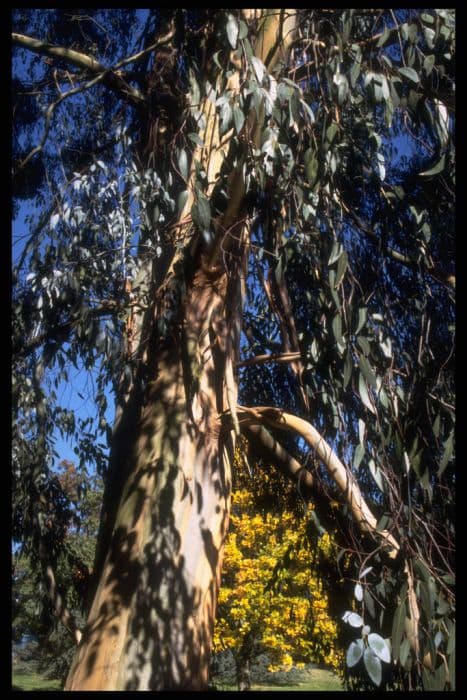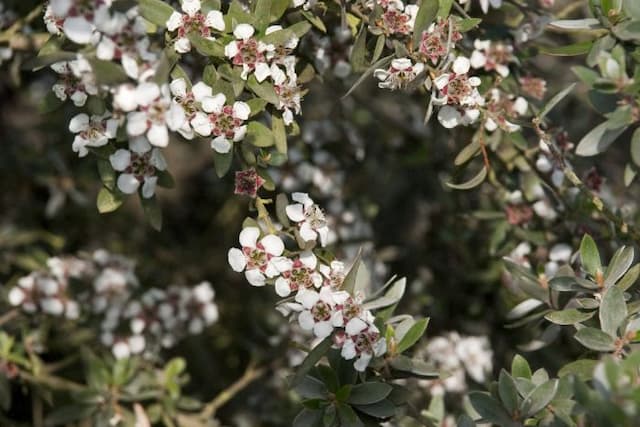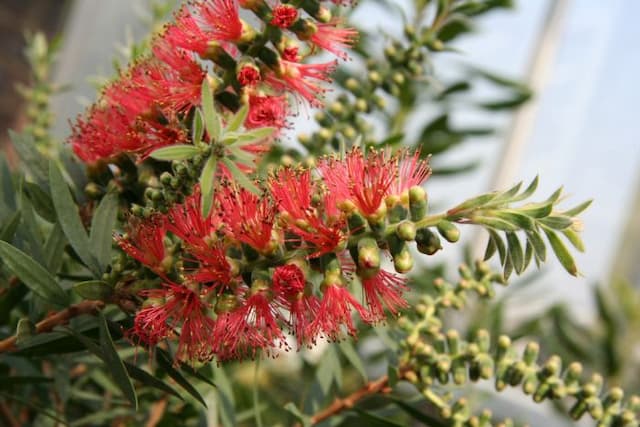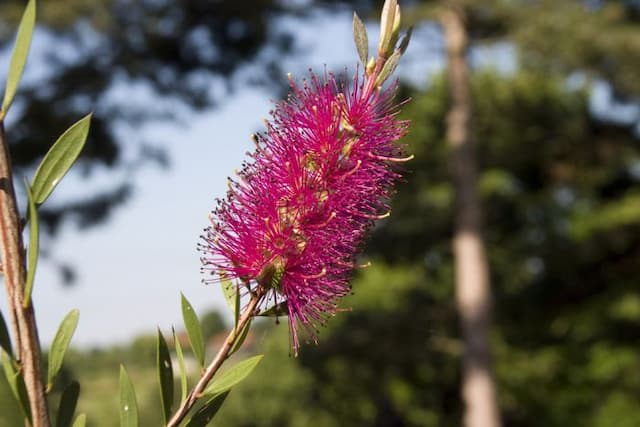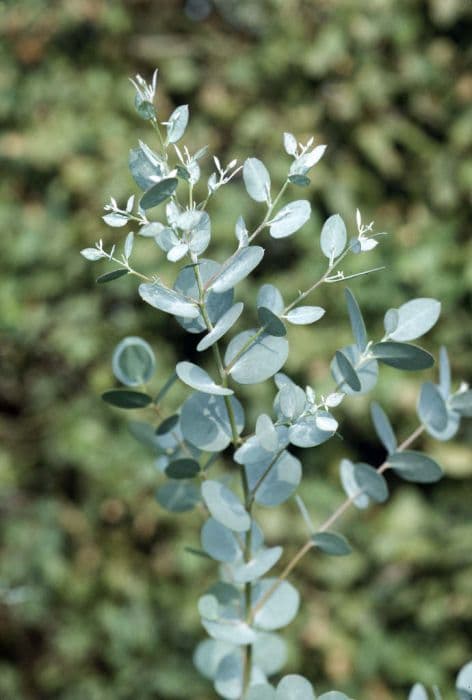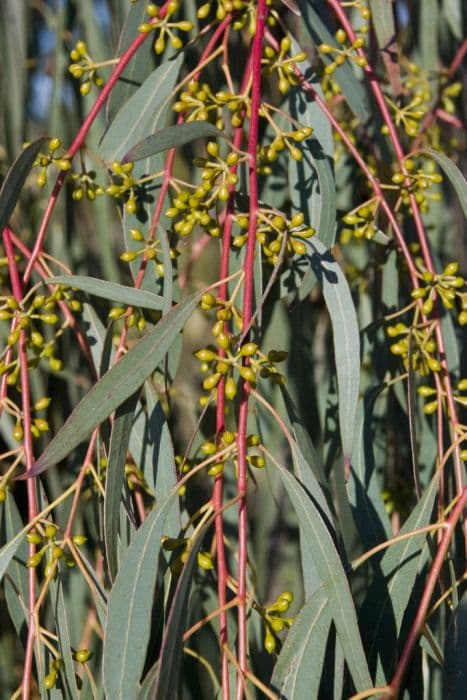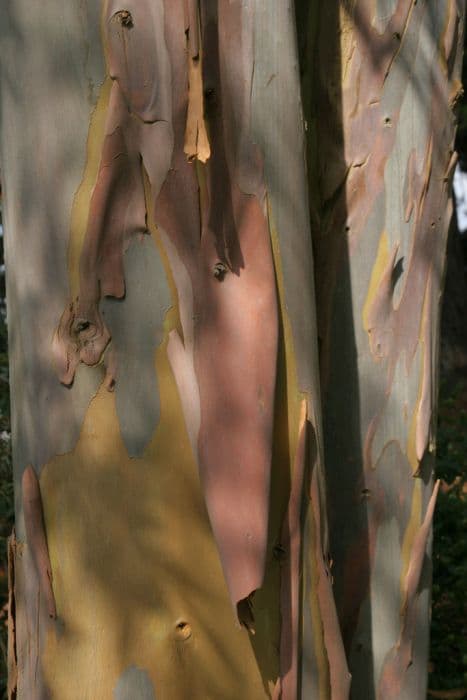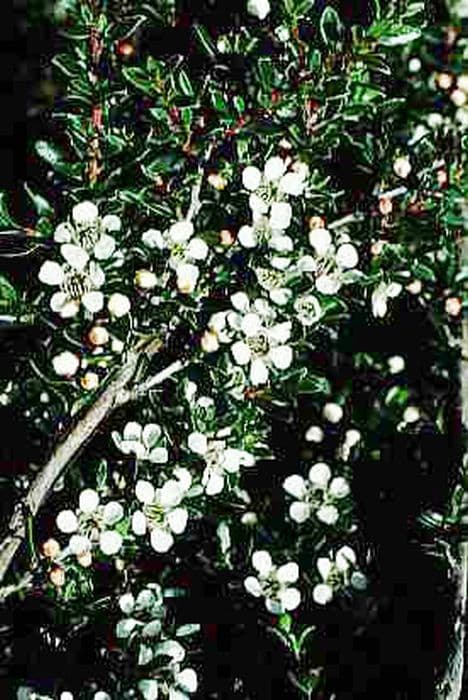Bottlebrush Callistemon viminalis 'Little John'

ABOUT
The 'Little John' is a popular cultivar characterized by its vibrant, brush-like red flowers that resemble bottle brushes. These distinctive blooms appear at the tips of the branches, creating a striking contrast with the dense, blue-green foliage. The leaves are small, narrow, and slightly curved, contributing to the plant's fine-textured appearance. The vibrant red flowers are particularly attractive to birds and insects, such as bees, which are drawn to the nectar. The bark of the 'Little John' is rough and adds to the overall texture of the shrub. The plant presents an attractive bushy and compact appearance, making it an ideal choice for ornamental gardens, borders, or as a low hedge. The rich color and lush foliage of the 'Little John' make it a favorite among garden enthusiasts who wish to add a touch of dramatic coloring to their landscapes.
About this plant
 Names
NamesFamily
Myrtaceae
Synonyms
Dwarf Bottlebrush, Little John Bottlebrush
Common names
Callistemon viminalis 'Little John'.
 Toxicity
ToxicityTo humans
Bottlebrush, including the 'Little John' variety, is not commonly known to be toxic to humans. There are no well-documented symptoms of poisoning from ingesting any part of this plant. However, it is generally advisable not to consume parts of ornamental plants due to potential adverse reactions or unknown toxicity.
To pets
Bottlebrush, such as the 'Little John' variety, is not commonly recognized as toxic to pets. There should not be significant symptoms of poisoning in pets from ingesting this plant. Nevertheless, pet owners should monitor their animals and prevent them from eating ornamental plants as a precautionary measure to avoid potential digestive upset or allergic reactions.
 Characteristics
CharacteristicsLife cycle
Perennials
Foliage type
Evergreen
Color of leaves
Green
Flower color
Red
Height
3 feet (0.91 meters)
Spread
5 feet (1.52 meters)
Plant type
Shrub
Hardiness zones
9
Native area
Australia
Benefits
 General Benefits
General Benefits- Attracts Wildlife: Bottlebrush 'Little John' is known to attract birds, particularly pollinators like hummingbirds, to gardens due to its vibrant red flowers.
- Drought-resistant: Once established, it has high drought tolerance, making it suitable for xeriscaping or low-water gardens.
- Compact Size: The 'Little John' cultivar is a dwarf variety, making it ideal for small spaces, borders or as a container plant.
- Low Maintenance: It requires minimal care, including less frequent pruning compared to other shrubs, which is ideal for busy gardeners.
- Year-round Interest: It offers year-round visual interest with its evergreen foliage and seasonal red flowering.
- Erosion Control: Its root system helps to stabilize soil, making it an excellent choice for slopes or banks.
- Heat Tolerant: The plant can withstand high temperatures, which is beneficial in hot climates or urban environments.
 Medical Properties
Medical Properties- Antimicrobial: The extracts of Callistemon viminalis have been studied for potential antimicrobial properties against various strains of bacteria and fungi.
- Anti-inflammatory: The plant may contain compounds with anti-inflammatory activity, which could be beneficial in reducing inflammation.
- Antioxidant: Some studies suggest that Callistemon viminalis may have antioxidant properties, helping to neutralize harmful free radicals in the body.
 Air-purifying Qualities
Air-purifying QualitiesThis plant is not specifically known for air purifying qualities.
 Other Uses
Other Uses- Dye Production: The flowers of 'Little John' can be used to produce natural dyes for fabric and other materials.
- Art Supplies: The fibrous wood and bark can be used to make paper or as a canvas for botanical artwork.
- Photography: 'Little John' makes for an attractive subject for nature photographers due to its vibrant flowers and distinctive form.
- Model Making: The branches and seed capsules can be used in dioramas or model landscapes for their unique shapes and textures.
- Educational Tool: Botany students can study 'Little John' to learn about plant growth habits, pollination, and adaptations.
- Floral Arrangements: The long-lasting flowers and foliage are used in dried flower arrangements and bouquets for decorations.
- Bonsai: 'Little John' can be trained into a bonsai form for ornamental purposes.
- Barrier Planting: Due to its dense growth, it can be planted to form a visual or wind barrier in gardens and landscapes.
- Wildlife Habitat: 'Little John' provides shelter and nesting sites for birds and beneficial insects in the garden.
- Erosion Control: This plant can be used on slopes or riverbanks to help stabilize soil and prevent erosion.
Interesting Facts
 Feng Shui
Feng ShuiThe Bottlebrush is not used in Feng Shui practice.
 Zodiac Sign Compitability
Zodiac Sign CompitabilityThe Bottlebrush is not used in astrology practice.
 Plant Symbolism
Plant Symbolism- Resilience: The 'Little John' bottlebrush is known for its hardiness and ability to withstand various environmental conditions, symbolizing the strength and resilience to endure challenges.
- Purification: Traditionally, bottlebrush plants have been associated with cleansing and purifying owing to their brush-like flowers that resemble a cleaning brush, implying the removal of negativity or the past to make way for the new.
- Protection: With its dense and bushy growth, the 'Little John' provides shelter for small animals and birds, representing safety and protection.
- Rejuvenation: The bright and vibrant red flowers of the bottlebrush signify rejuvenation and a burst of energy, inspiring a sense of renewal and new beginnings.
- Attraction: The striking flowers and their enticing nectar are known to attract various pollinators, symbolizing charm and the ability to attract good things into one’s life.
 Water
WaterThe Bottlebrush 'Little John' prefers consistent moisture but is relatively drought-tolerant once established. Water young plants deeply once a week, allowing the water to penetrate the soil to a depth of about 8 inches. For established plants, reduce watering to every two to three weeks, depending on the climate and weather conditions. In the peak of summer heat, water might be needed more frequently, but always check the soil moisture level first. Ensure that the plant receives roughly 1 gallon of water at each interval for optimal growth and bloom production.
 Light
LightThe Bottlebrush 'Little John' thrives in full sun, where it can receive at least six to eight hours of direct sunlight per day. A spot that is sunny for most of the day is ideal for this plant, as it will encourage the most prolific flowering. Avoid heavily shaded areas which can lead to poor growth and reduced blooming.
 Temperature
TemperatureThe Bottlebrush 'Little John' is hardy in a range where temperatures do not typically drop below 20 degrees Fahrenheit. The ideal growing temperatures for this plant range between 50 to 90 degrees Fahrenheit. It can tolerate short periods of colder weather, but prolonged exposure to temperatures below freezing can be damaging.
 Pruning
PruningPruning the Bottlebrush 'Little John' is important to maintain shape and encourage bushier growth. It is best pruned after flowering has finished to avoid cutting off next season's blooms. Annually, or as needed, remove any dead or diseased wood and trim back branches that have become too long. Pruning every couple of years is typically sufficient for maintaining a compact form.
 Cleaning
CleaningNot needed
 Soil
SoilThe Bottlebrush 'Little John' thrives in well-draining soil rich in organic matter with a soil pH range of 5.5 to 6.5. A mix containing equal parts of peat, pine bark, and coarse sand is ideal to ensure good drainage and aeration. Regular amending with compost can promote a healthy root system and vibrant growth.
 Repotting
RepottingBottlebrush 'Little John' should be repotted every 2-3 years or when the plant becomes root-bound. It is best to repot in the spring before new growth begins. Using a slightly larger pot each time will encourage continued growth and health.
 Humidity & Misting
Humidity & MistingBottlebrush 'Little John' prefers moderate humidity levels but is adaptable to the lower humidity typically found in most homes. It does not require high humidity environments, making it relatively easy to maintain indoors without additional humidity control.
 Suitable locations
Suitable locationsIndoor
Place 'Little John' in bright, indirect light and water regularly.
Outdoor
Plant in sun to partial shade, water as needed, and protect from frost.
Hardiness zone
8-11 USDA
 Life cycle
Life cycleBottlebrush 'Little John' begins its life cycle as a seed, which germinates in warm, moist soil conditions. Seedlings emerge and establish a root system while their stems and the characteristic narrow, lance-shaped leaves develop. As the plant matures, it enters the vegetative stage, growing actively and producing dense foliage. Upon reaching maturity, 'Little John' starts its reproductive stage, characterized by the development of vibrant red, brush-like flowers that attract birds and insects for pollination. Following pollination, the flowers produce woody capsules containing seeds that will disperse to initiate a new generation. Over time, 'Little John' may enter a period of senescence, with reduced growth and vigor, eventually leading to the end of its life cycle.
 Propogation
PropogationPropogation time
Spring-Early Summer
The most popular method of propagating the 'Little John' Bottlebrush is through semi-hardwood cuttings. Typically, the best time to take these cuttings is in late summer or early fall when the plant's growth begins to slow. Cuttings should be about 4 to 6 inches long, and the leaves on the lower half of the stem should be removed. Dipping the cut end into a rooting hormone can help encourage root development. The cutting should then be inserted into a pot filled with a well-draining soil mix, such as half peat and half perlite. It's important to keep the soil consistently moist and to place the pot in a warm area with indirect sunlight until roots have developed, which can take several weeks.

